

Inspecting these systems used to be quite easy. The huge, ancient cast iron boilers all used to work just fine. In my area almost all of them were originally coal fired and later converted to oil. Most oil suppliers offer service contracts and the techs seemed to do everything they could to keep that old oil-thirsty monster running. The last thing they want is an owner updating the system to something more efficient, or worse, replacing it with a gas-fired system. There are some that have been converted with gas or propane burners, but these are rare.
Over the past 20 or so years, I'm seeing fewer of these really old boilers still in service. I think part of it is due to the younger heating professionals not acquiring the knowledge needed to keep these old systems going. There also seems to be a growing trend where many "technicians" sent on service calls act like salesmen chasing commissions. It's easier to quickly upsell an entire new system when the old boiler is having an issue mid-winter. Then there's that thing about the old system being very inefficient.
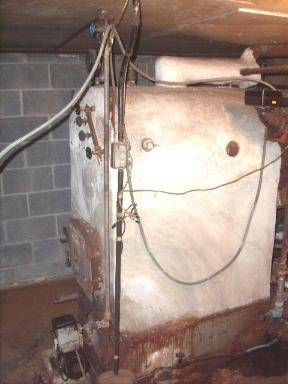
The new boilers are smaller, more efficient and make steam quicker. If they use less fuel to boil water and more heat goes into making steam rather than up the chimney, why has there been so many cases that the cost to heat the building with the new boilers increased? Why are there so many issues with the home not heating adequately, evenly or reliably after replacing the old one? Why do we have to have the newer boiler serviced and repaired so many times a season? Why are so many of these newer boilers failing very early?
The old beasts were much, much larger than the newer boilers. This allowed plenty of room for water to boil and for steam to separate from the water. When boiling water on my stove, it's more likely to "boil over" in a little sauce pan than in a large stock pot. The same applies to small boilers boiling over. In addition to the smaller size, the newer boilers have very narrow internal passageways resulting in too much water rising up out of the boiler with the steam.
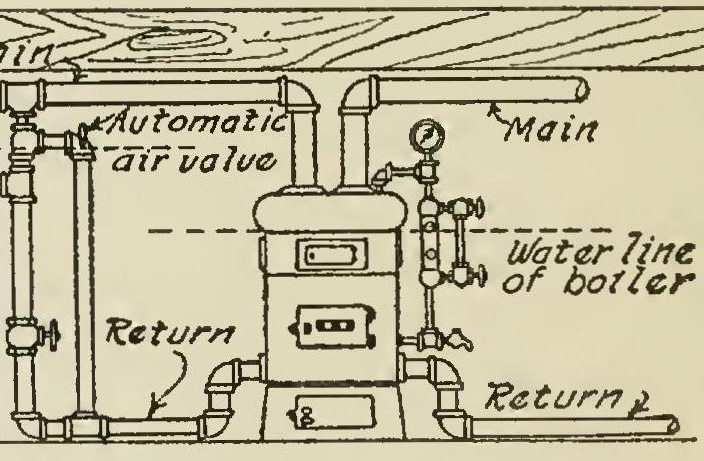
When water travels up into pipes that should only contain steam, bad things happen. The problems can include boiler water level issues, water hammer, increased heating costs, damage to components and shorter boiler life. Since the new smaller boilers have less room to separate the steam from the water, the piping above the boiler now has to be configured specifically to take on this task. The problem is finding a heating contractor that knows how to install the piping correctly. In my area, I'm more likely to see a unicorn in a basement than a correctly installed steam heating system.
Proper Near-Boiler Piping

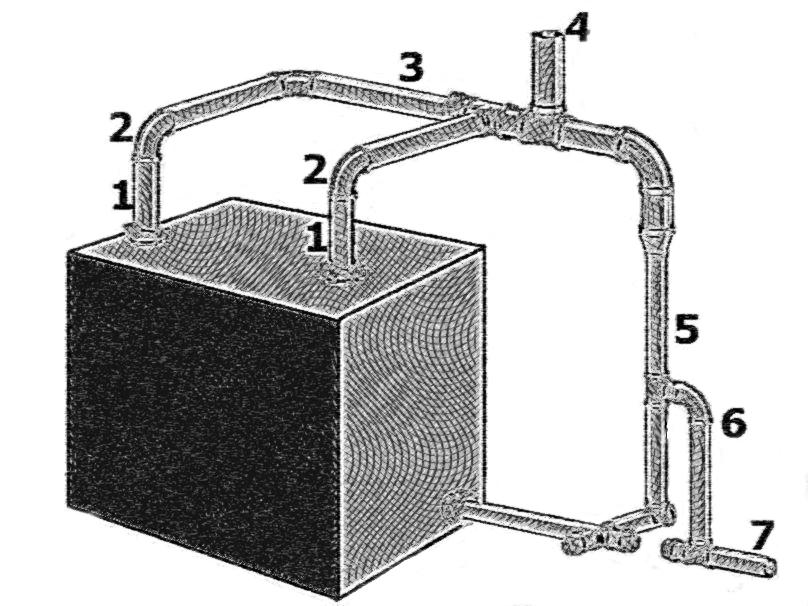
1. RISER - should be at least 24 inches above the water level inside the boiler. 24 inches above the top of the boiler is even better.
2. SWING JOINT - allows some movement because the piping expands at a different rate than the boiler.
3. HEADER - horizontal pipe where there's room for the water and steam to separate.
4. TAKE OFF - where the steam travels up to the main steam pipes.
5. EQUALIZER - allows the water from the header to drain back into the boiler. It also equalizes the pressure between the steam side and the condensate return side of the piping.
6. HARTFORD LOOP - in case there's a leak in the condensate piping, all the water won't drain out of the boiler. That would be bad.
7. CONDENSATE RETURN - the pipe that brings back the water that condenses when steam gives up its heat.
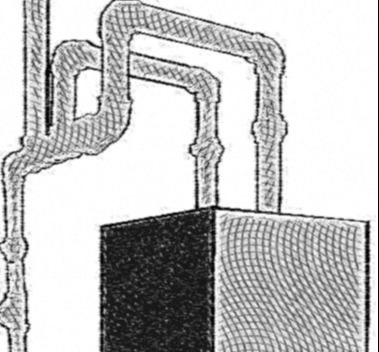
A DROP HEADER can be even better at separating water from the steam
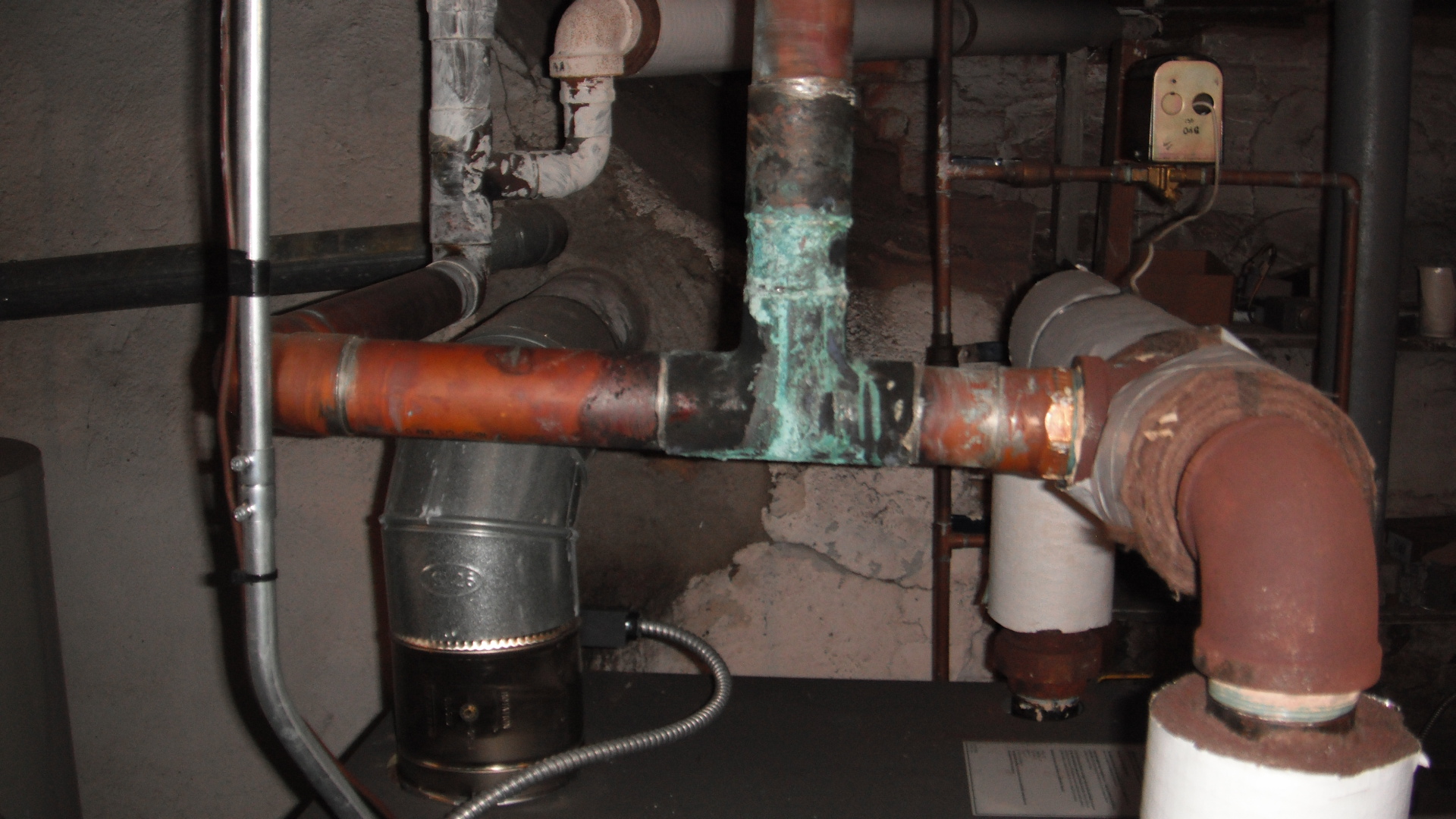
Using copper for steam piping is not a
good practice and often leads to joint failures
Once the near boiler piping is installed correctly, there are a few other items that can make a big difference.
AIR VENTS - When water is heated to steam (liquid to gas) , it expands 1700 times and this expansion is why the steam travels quickly through the pipes and the radiators. But, the steam won't go where it needs to if there is air trapped in the pipes. Air vents open to let air out and close once the steam arrives. They need to be in the correct locations and working properly.
PIPE INSULATION - It's important that steam doesn't cool and turn back into water before it reaches the radiators. That's where most of the heat should be released. Many of the steam piping systems have had the nasty old asbestos insulation removed and never replaced. All pipes in the system carrying steam should be insulated.
CLEANING THE BOILER - All boilers should be cleaned annually as sludge collects from the heating season. Newly installed boilers need to be cleaned immediately after installation. Maybe even a couple times. There are oils in the boiler from the manufacturing process that need to be skimmed off the top of the water as it can interfere with steam production.
CORRECT PRESSURE - Most steam boilers I see are set to operate at pressures set way too high. This is often the result of inexperienced contractors thinking higher pressure will resolve all the issues with the system. This higher pressure only compounds the issues. Steam needs just enough pressure to overcome any friction inside the pipes. 0.5 to 1.5 psi is the preferred range.
MOST IMPORTANT - Find an experienced steam heating technician that knows steam boilers and piping to install, repair and maintain the system. When found, pay what they're worth and then buy them a lobster dinner.

Bill Kibbel is a consultant and an inspector of historic homes
& commercial buildings at Heritage Building Inspections.
Built with Mobirise - Read more